The escalating cost of automotive ownership, particularly within the luxury segment, is a topic garnering significant attention. According to a recent article in *A Wealth of Common Sense*, “In 1900, there were just 8,000 automobiles registered in the United States,” highlighting the dramatic growth and subsequent impact on the market. This surge in vehicle ownership, particularly amongst the affluent, has coincided with a notable increase in both purchase prices and maintenance costs for premium vehicles. Industry sources report that this trend is further exacerbated by the rising demand for exclusive models equipped with cutting-edge technology, pushing the price point for luxury cars to unprecedented levels. This, in turn, affects the depreciation curve, a factor that even high-net-worth individuals are increasingly factoring into their acquisition decisions.
This shift in the luxury automotive market is mirrored within the premium yachting sector. Reports from leading yacht brokers suggest a similar increase in both acquisition and running costs. The increasing demand for bespoke features, high-performance engines, and eco-friendly technologies integrated into luxury yachts is driving prices to astronomical figures. “By 1910, there were nearly half a million cars,” according to the *A Wealth of Common Sense* article, illustrating the rapid expansion of the market – a trend that continues to this day, but at a far higher price point within the luxury segments. This rapid growth, combined with the sophisticated materials and craftsmanship required in these vessels, creates a dynamic where even depreciation is a significant factor to consider, particularly for those seeking to resell after a relatively short period.
Manufacturers of luxury vehicles and yachts are responding to these market pressures in various ways. Some are focusing on creating more sustainable and efficient vehicles and yachts in an attempt to alleviate some of the financial burden of ownership over the long term, while others are emphasizing exclusive bespoke options to justify the escalating purchase price. According to company officials at several prominent luxury car manufacturers, the shift towards electric and hybrid models, although expensive to develop, is viewed as both a necessary step towards environmental responsibility and a means of mitigating future regulatory constraints. Experts predict that future technological innovations, such as autonomous driving systems and advanced materials, will further impact both the purchase price and the long-term cost of ownership.
However, the implications extend beyond the mere financial aspects. The escalating costs of luxury vehicle and yacht ownership are altering lifestyle choices among high-net-worth individuals. Some reports suggest a shift towards shared ownership models, fractional ownership programs, or a renewed interest in vintage vehicles and classic yachts that, while still expensive, offer a potentially more stable investment proposition. “By the start of the Great Depression in 1929 it had skyrocketed to 23 million,” notes the *A Wealth of Common Sense* article, indicating the scale of the market shift; though the context is vastly different today, the underlying principle of market fluctuation remains relevant to today’s luxury market. This underscores the need for sophisticated financial planning when considering large-scale luxury acquisitions.
In conclusion, the rising cost of ownership in the luxury automotive and yachting sectors presents a complex challenge. The interplay between technological innovation, environmental concerns, and fluctuating market forces is reshaping the luxury lifestyle landscape. While the prestige and exclusivity of these premium goods remain undeniable, a nuanced understanding of financial implications, including the impact of depreciation, is crucial for discerning buyers navigating this evolving market. Experts predict that the coming years will see further diversification within the luxury market, with an increasing emphasis on sustainable practices and innovative ownership models catering to the needs of a discerning and increasingly financially astute clientele.
Credit(s): Depreciating Financial Assets











